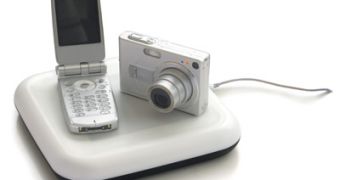Wireless power transmission was first demonstrated as a viable way to transmit electric energy over long distances between electric and electronic devices by Nicola Tesla during the early 1900s at the Colorado Springs experiment station, when he remotely powered a set of lights in the ground. Tesla's idea was indeed impressive, but remained unexploited. Only recently have researchers started to develop wireless power transmission techniques over long distances, some of which have already been implemented in several devices you probably use on a daily basis.
Inductive coupling
One of the means to power a device wirelessly is to couple it inductively with the power source. Inductive coupling is the phenomenon electric transformers rely on to work properly. If you remember correctly, transformers consist of two coils - a primary coil and a secondary one - coupled inductively through an armature. Current is circulated through the primary coil, which generates a variable magnetic field, carried through the armature to the secondary coil. The magnetic field then induces in the secondary coil an electrical current that can be used to power a particular device.
The same principle can be successfully applied for wireless power transmission. Electric toothbrushes for example, are usually sealed from the surrounding medium to prevent moisture damaging the inner electric parts. To compensate for this disadvantage, most of them incorporate rechargeable batteries that are supplied with electric current through an inductive coupling.
The charger houses the primary winding coil, which is powered by current from the wall outlet, while the secondary coil is placed inside the toothbrush. When the electric toothbrush is placed on the recharger, the magnetic field generated by the primary coil is picked up by the secondary coil inside the toothbrush, generating an electric current used to recharge the batteries.
Resonance
The problem with this wireless power transmission technique is that it generates a highly confined, small magnetic field which acts only on short distances. To make it more efficient on long distances, one has to take in consideration resonance.
Resonance is achieved between two coils when the electromagnetic field around them oscillates at the same frequency. This is done by using a curved coil as an inductor, which is coupled with a capacitance plate. As long as the two coils are in resonance, the power transfer between them will continue. When the two coils resonate on different frequencies, no power is transferred between them.
Microwave
Nevertheless, not even resonance works when distances several kilometers long are involved. Instead microwave radiation comes into play. The idea is that microwaves can be generated with the help of ground-based transmitters and will then be picked up by a certain device with the help of a rectifying antenna that converts microwaves straight into direct current.

 14 DAY TRIAL //
14 DAY TRIAL //